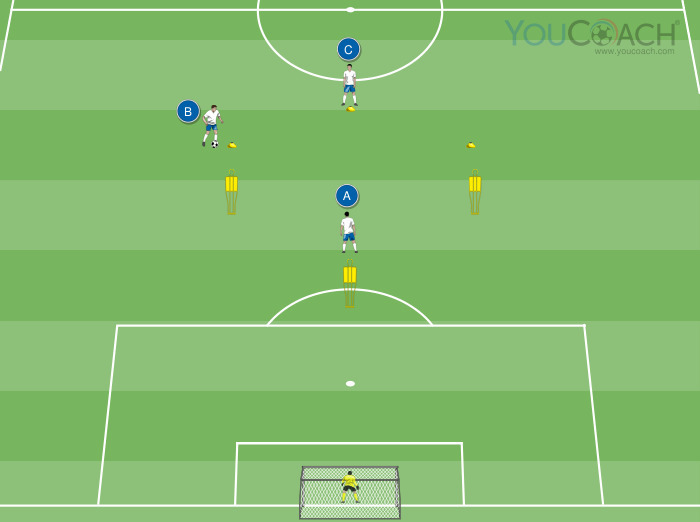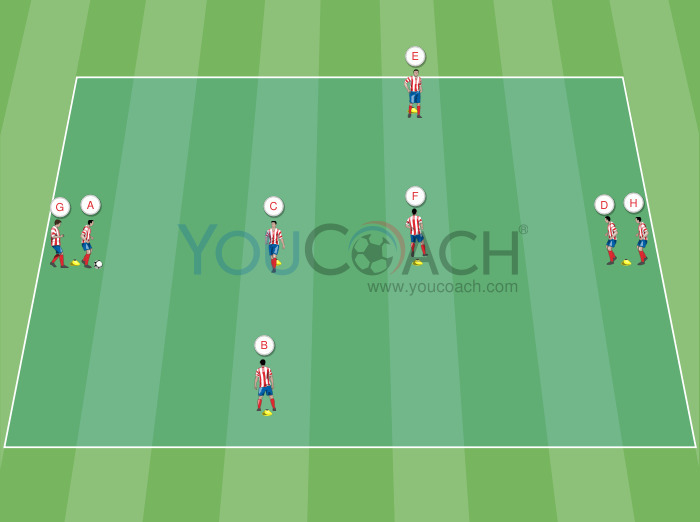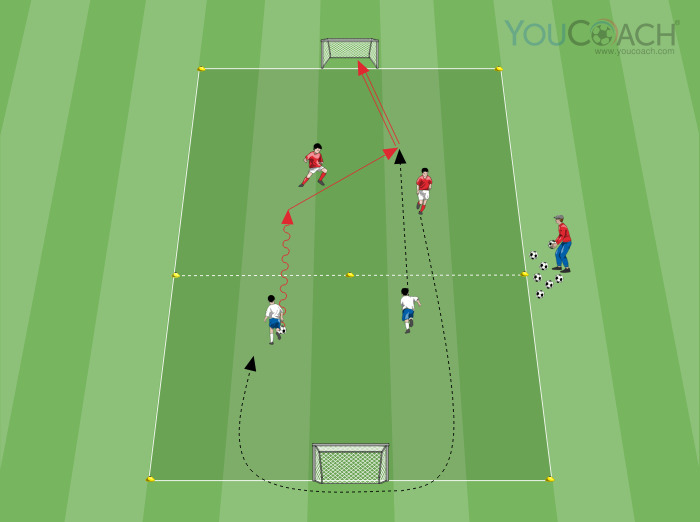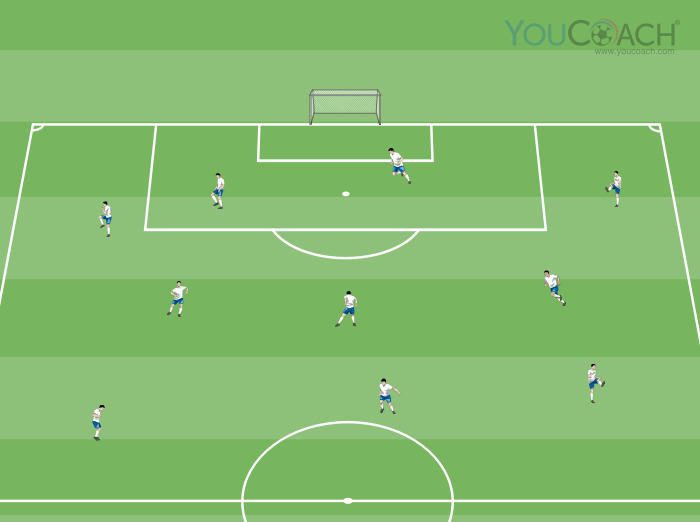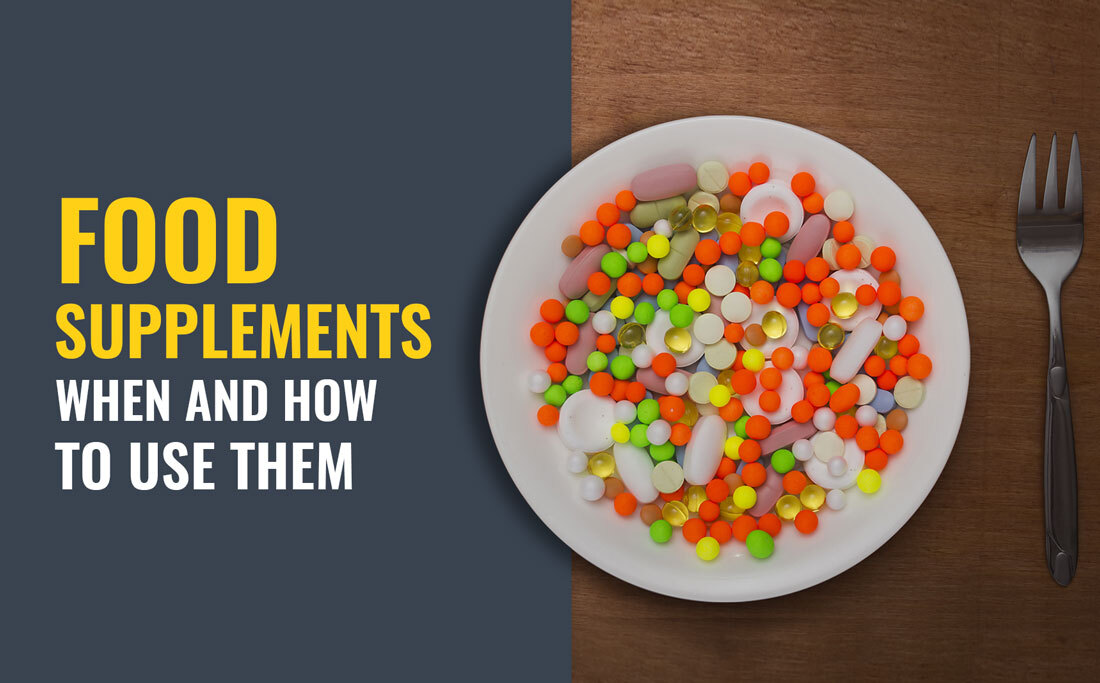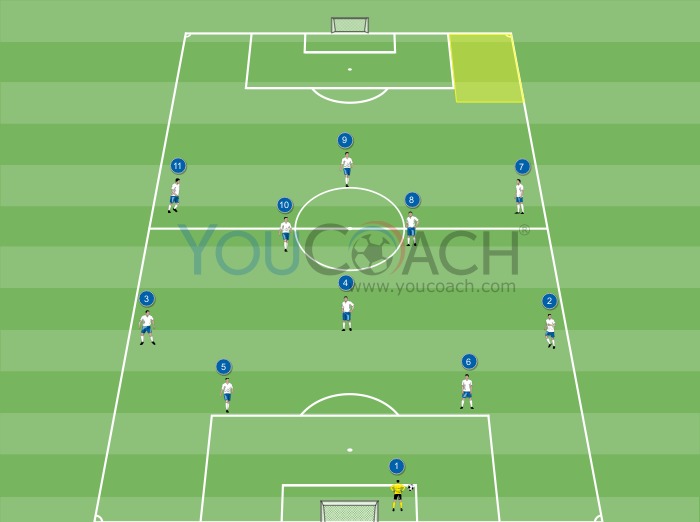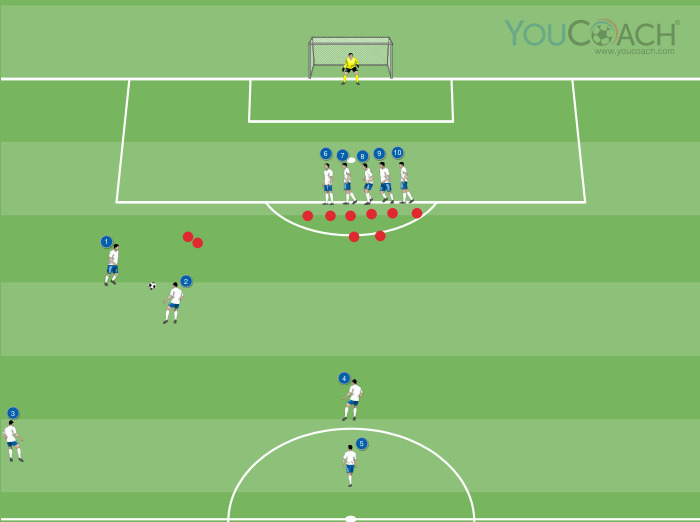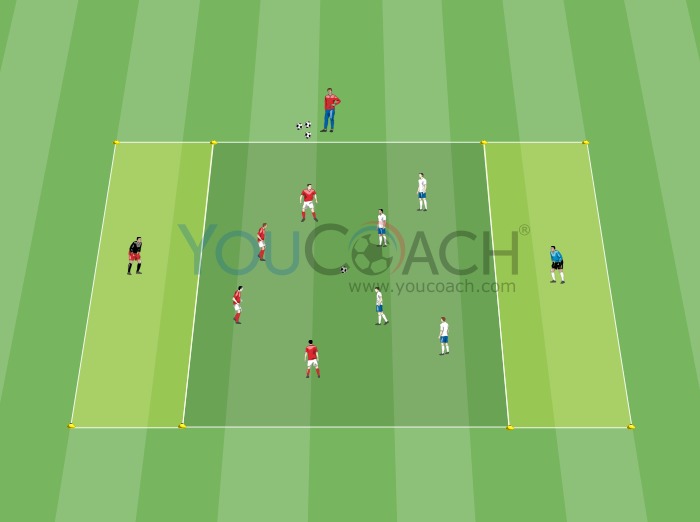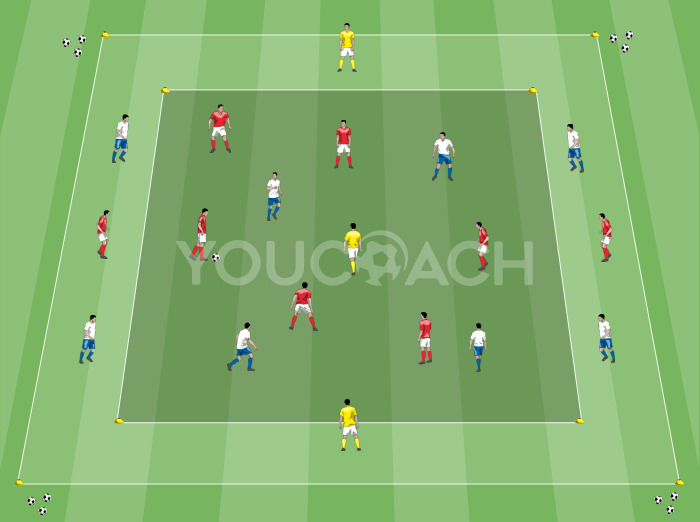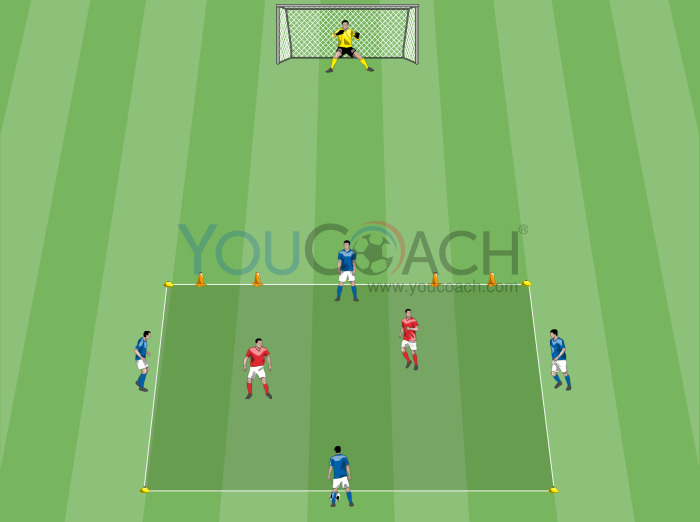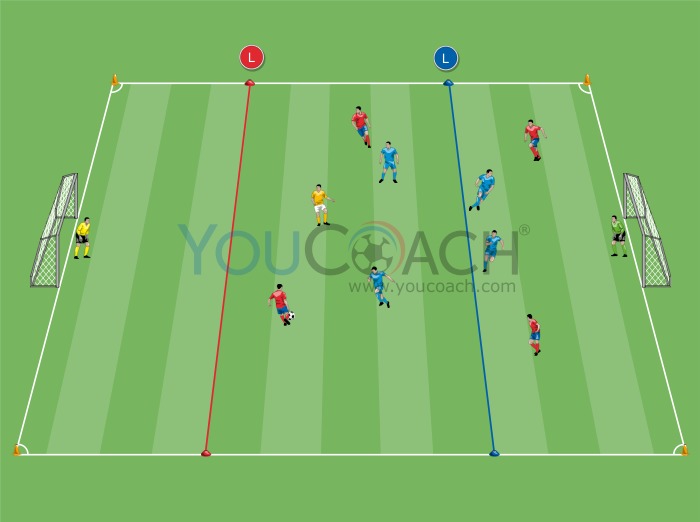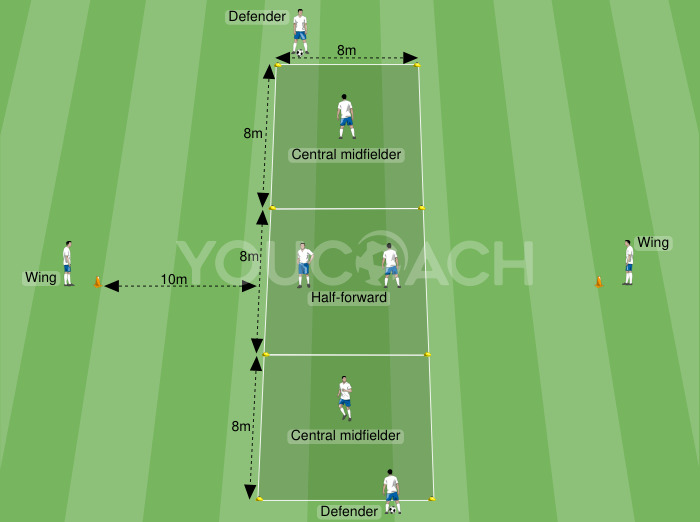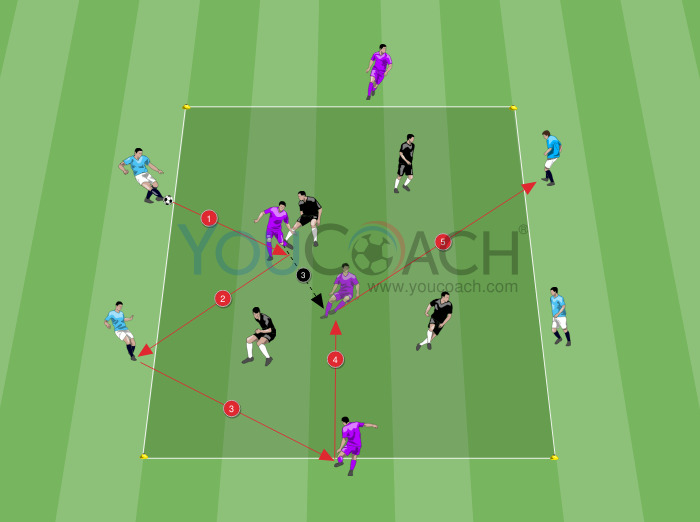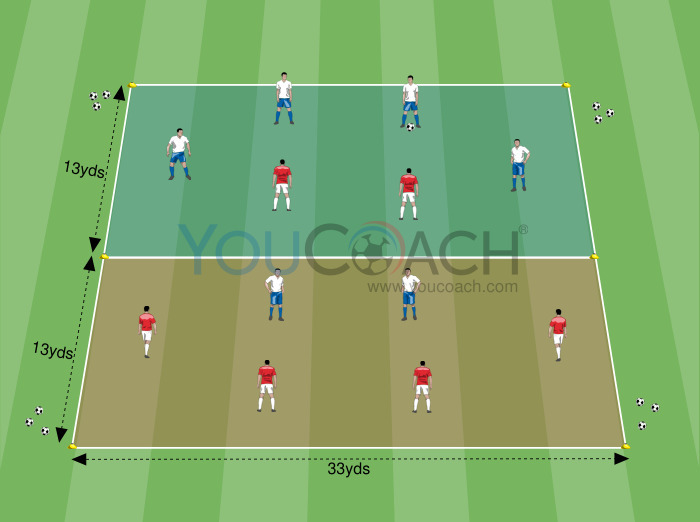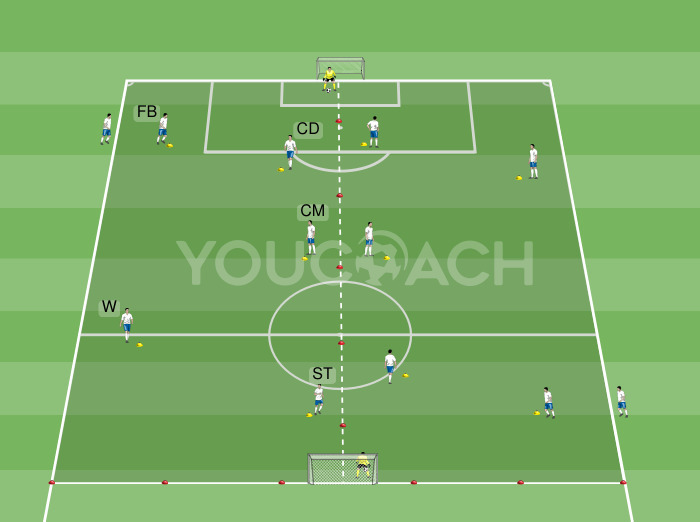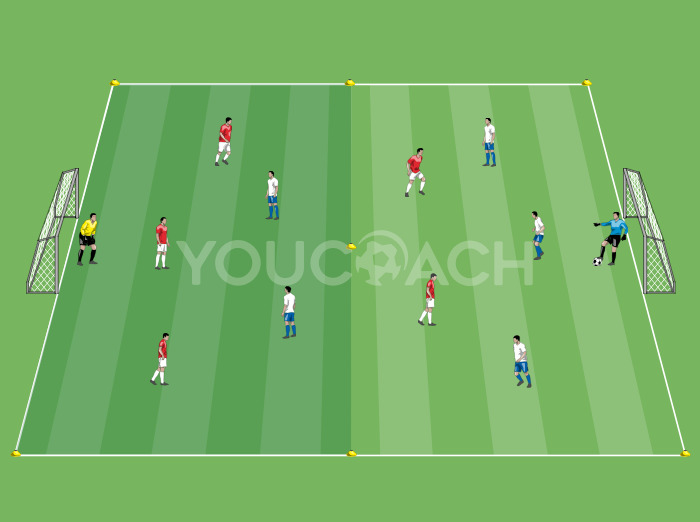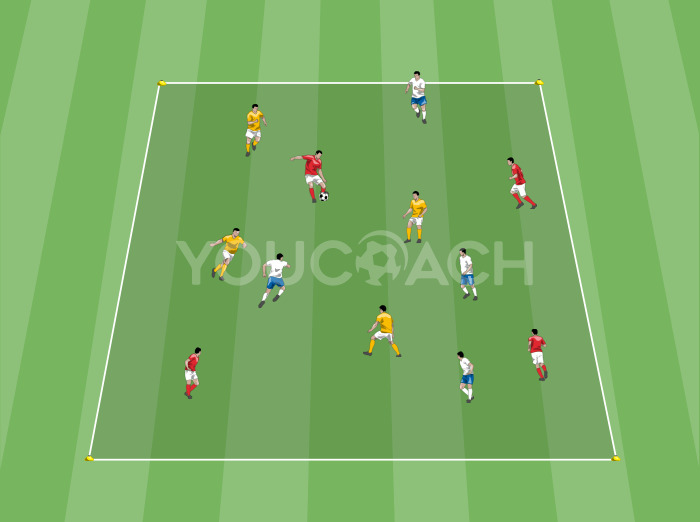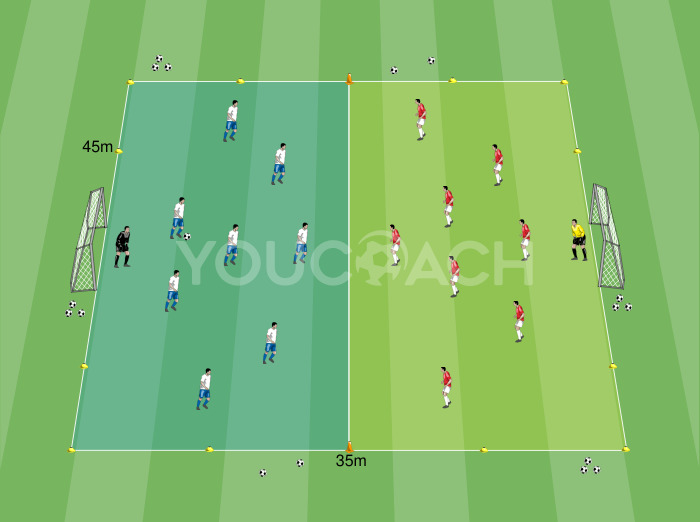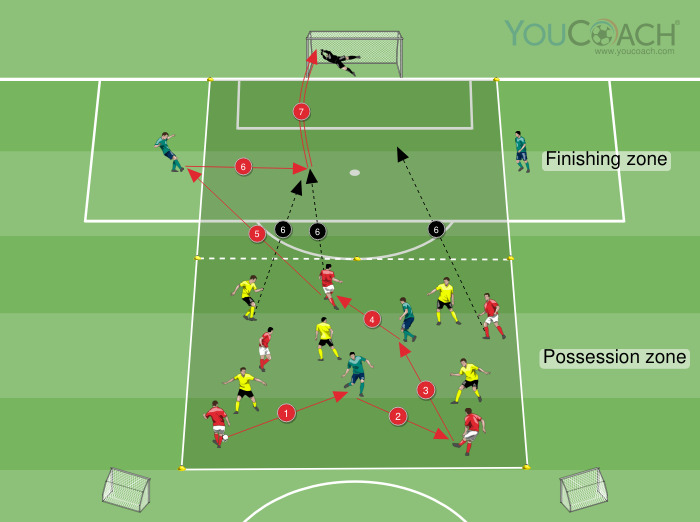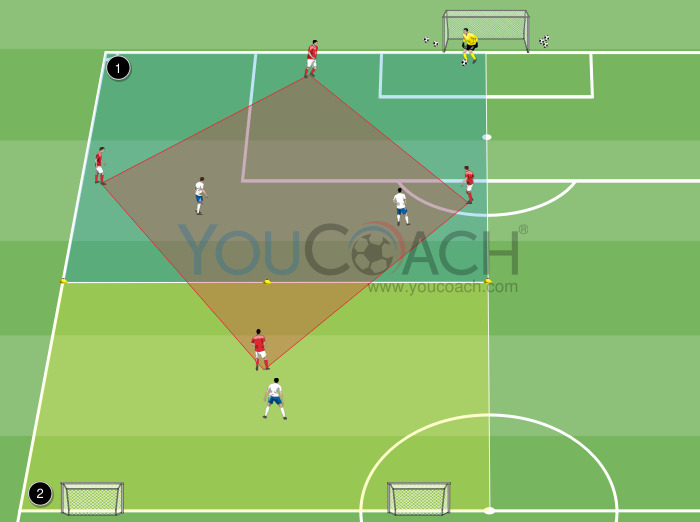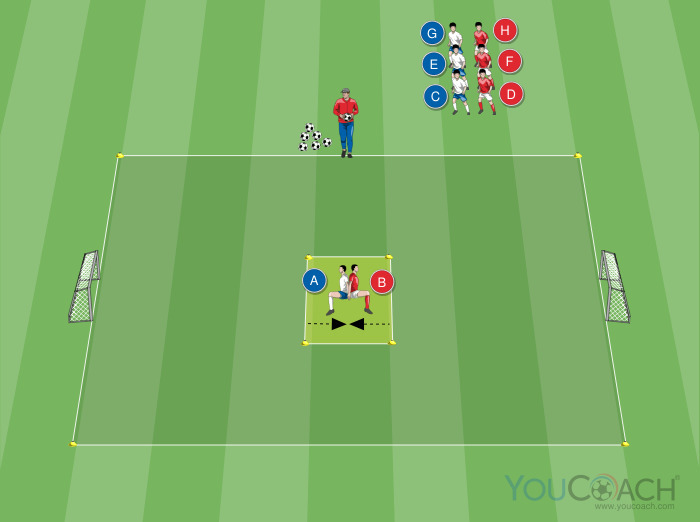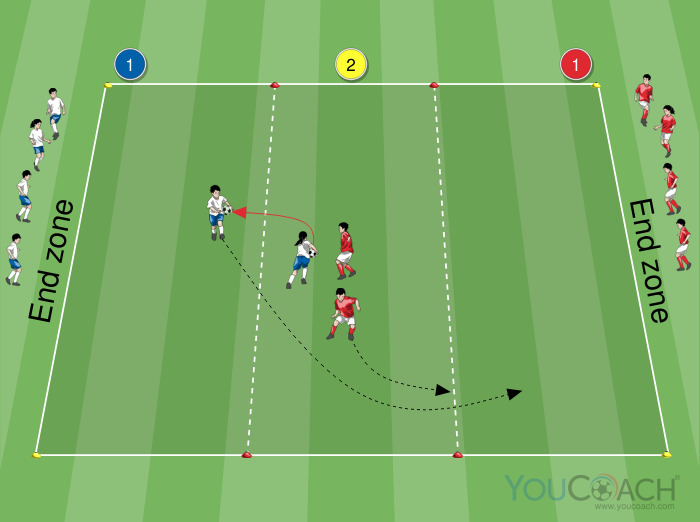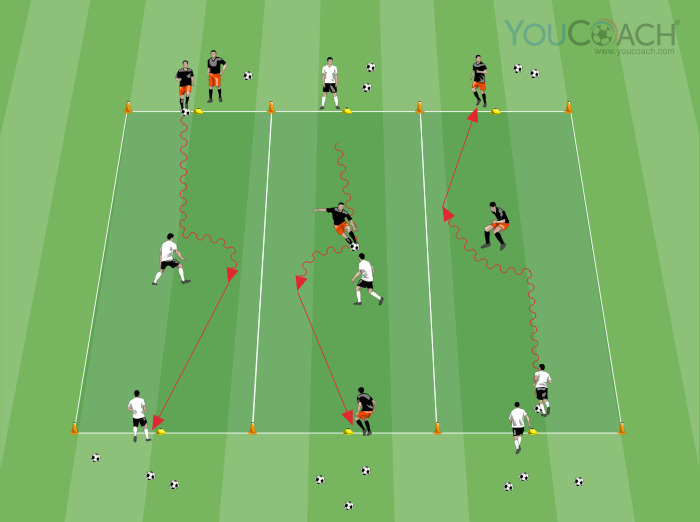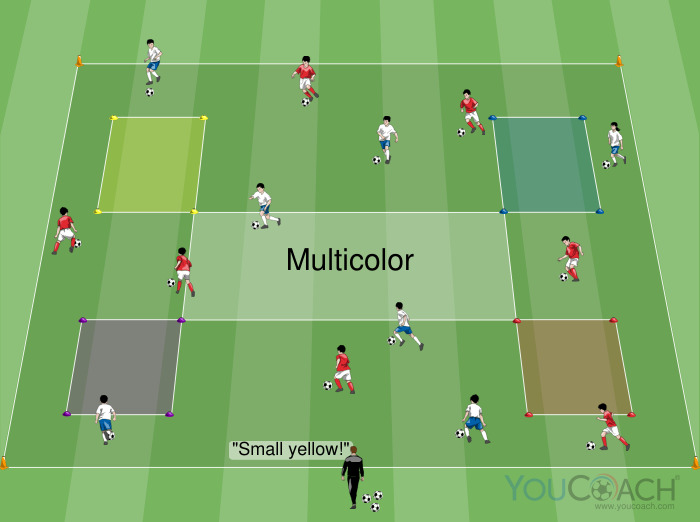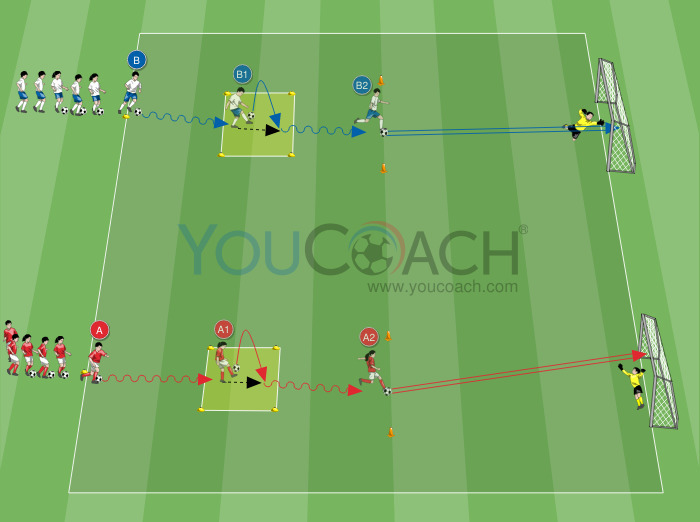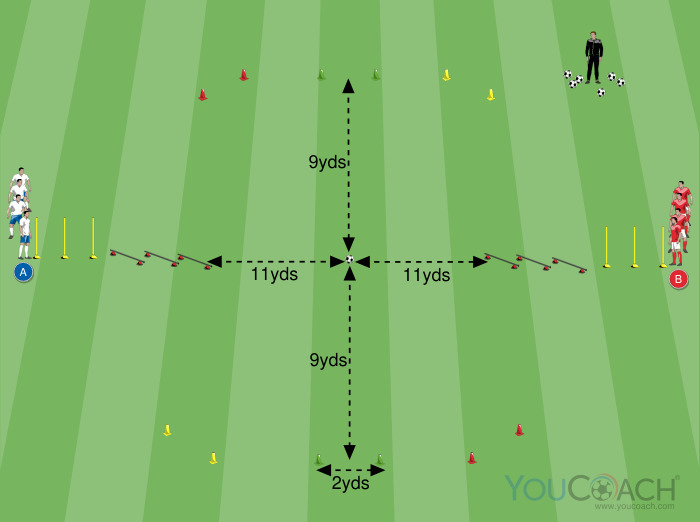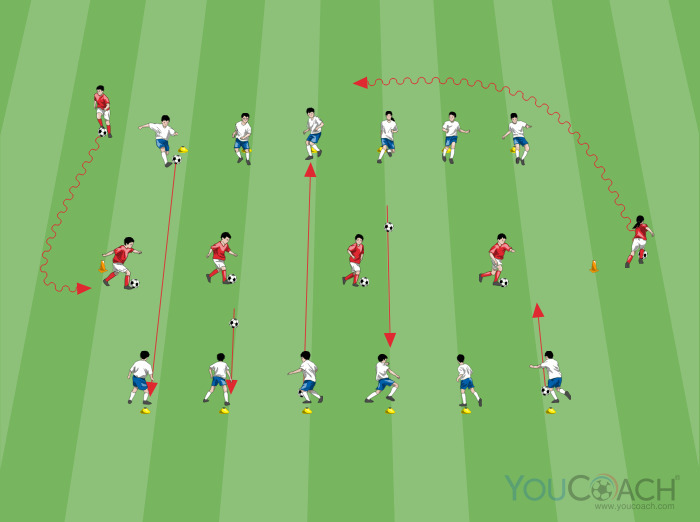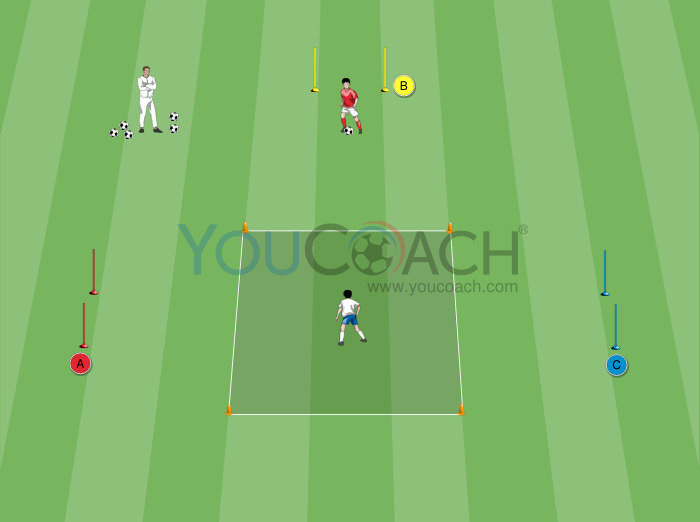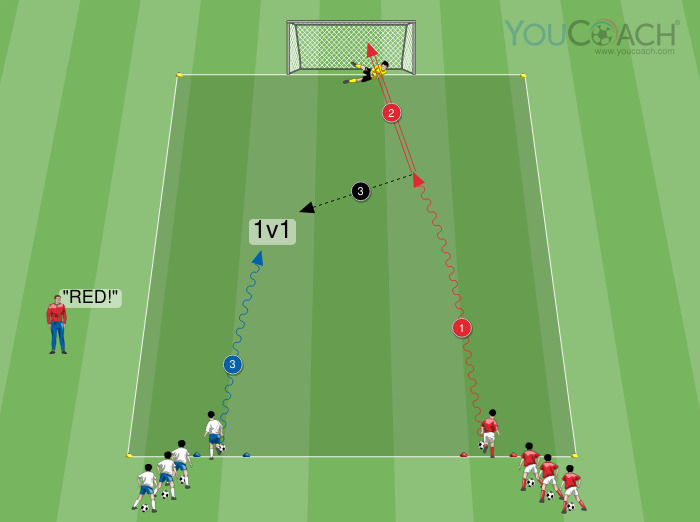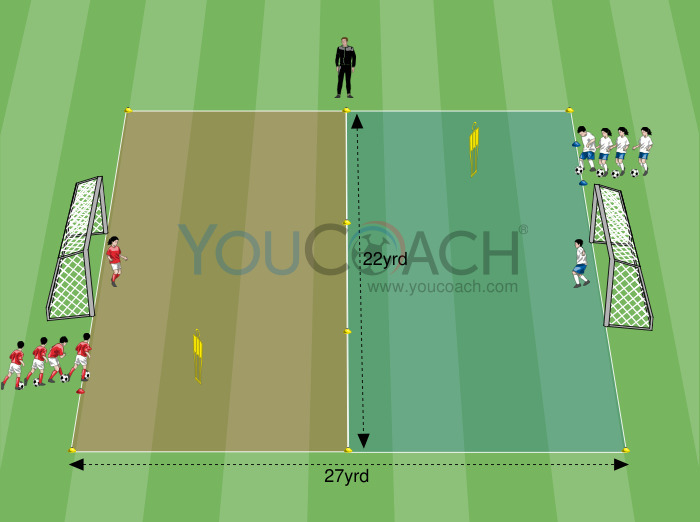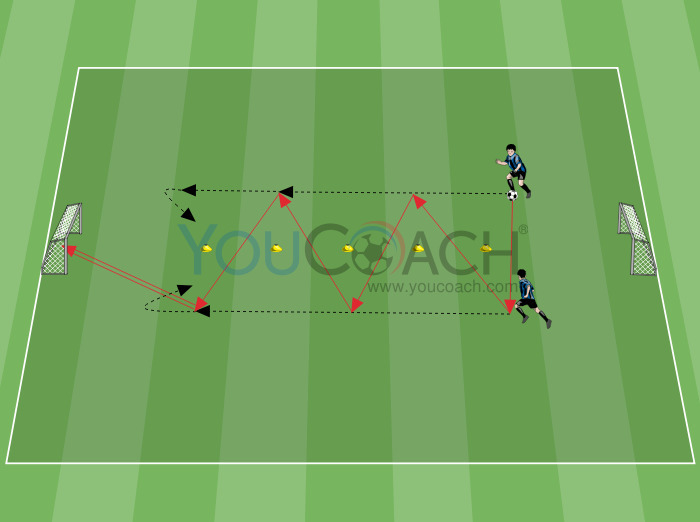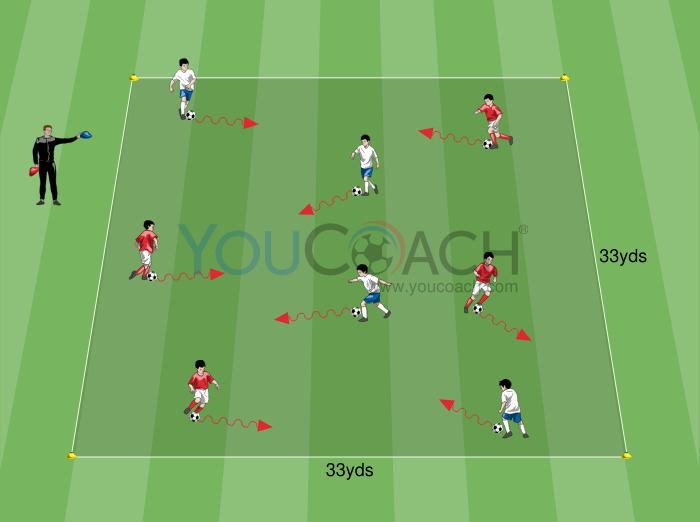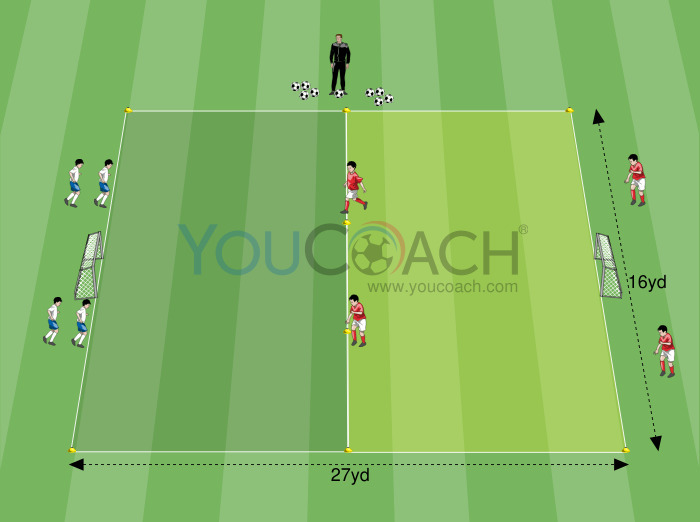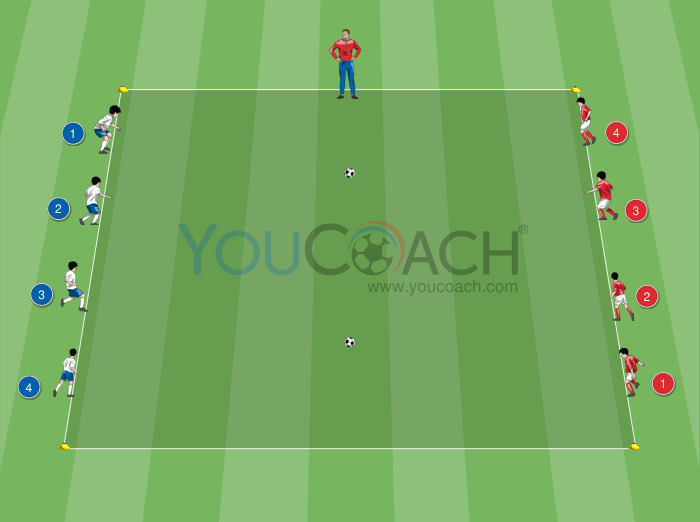Nutrition in young players - Part 2
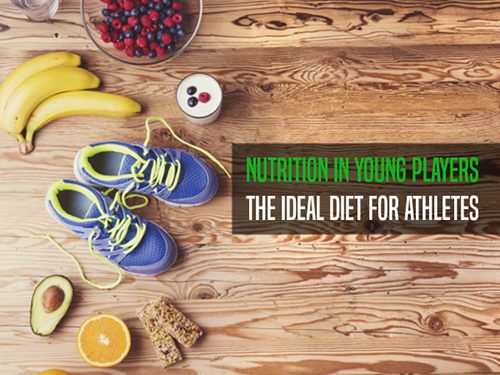
|
What do young players need? Which are the most appropriate foods for their diet? The nutritionist’s suggestions |
CARBOHYDRATES
Ingested carbohydrates can be used in three different ways depending on their quantity and quality, and on the ingestion moment as well:
- They can be transformed into energy
- They can be stored in the liver and muscles (muscle and liver glycogen stores)
- When the body is not in need of energy and has no possibility or necessity to create glycogen stores (muscle and liver glycogen) and there is a calorie excess, they can be transformed into fat stores.
- In the morning as an energy source for the body to get through the day;
- At lunch to supply energy for studying in the afternoon, sports and daily activities;
- Before and during sports activities as an energy source;
- Soon after sport activity to restore muscle glycogen depleted stores;
- Moderately in the evening, depending on how carbohydrates have been distributed in the other meals of the day and during practice
After digestion carbohydrates are used mainly as body stores in the liver and muscles. Those stored in the liver are used as a reserve for the whole body, whereas those present in the muscles can be used exclusively by the muscle that has “stored” them (the glycogen in the quadriceps is available only for this muscle and not for the brachial biceps or other muscles of the body).
There are many sources of carbohydrates available, the best known are cereals, fruit and vegetables.
The key criterion for the selection of carbohydrates can be defined as their absorption rate. Refining processes increase the absorption rate (e.g., white bread has a high glycemic index while 100% whole grain rye bread has an average-low index)
Breakfast: Let’s consider whole-grain cereals and fruit as most useful ingredients for breakfast. These two food categories are major suppliers of slow-average absorption rate carbohydrates, fibre, mineral salts and vitamins. We should avoid in particular all those products obtained from refined food raw materials (e.g., fine ground flour) and added with fats (like vegetable oils of unknown quality, butter, margarine, etc.), restricting their use to special occasions. Let’s prefer for breakfast whole grain cereals (muesli, oatmeal, whole grain bread, rusks and crackers). Select preferably seasonal fruit to be included for breakfast or as snacks.
Lunch-dinner: Cereals like rice and pasta can be included in the main meals, preferably whole grain products because of their content of fibre and group B vitamins. Several kinds of carbohydrate sources can be used after exercise, in case of daily exercise high glycemic index foods can be used to restore muscle glycogen stores.
- Breakfast: whole grain cereals (oatmeal, rye flour products, muesli, bran), fruit (preferably seasonal fruit), dehydrated fruit
- Snack: fruit, whole grain cereals (whole grain crackers or bread)
- Lunch: pasta, rice, potatoes, vegetables
- Snack after exercise: this meal becomes important only when several training sessions are done during the day or after intense practice (depletion of muscle and liver energy stores is directly related to practice intensity); in this case high glycemic index food with high absorption rate can be taken, such as rice, potatoes, biscuits with honey, dehydrated fruit, etc.
Snack before exercise: according to digestibility, palatability and time of exercise, whole grain cereals (bread, rice or corn biscuits) or fruit can be taken
Dinner: beans, vegetables, limited portions of carbohydrates from whole grain cereals (amounts vary according to their distribution over the day)
| Product - Typea | Kcal/100 g | Carbohydrate | Proteins | Fats |
|---|---|---|---|---|
| Whole rice | 362 | 76.2 | 7.5 | 2.7 |
| Pearled barley | 352 | 77.7 | 9.9 | 1.15 |
| Oatmeal | 375 | 72 | 7.7 | 7.8 |
| Whole grain pasta | 350 | 63 | 13 | 2.5 |
| Rusks | 407 | 72.3 | 13.5 | 7.2 |
| Muesli | 368 | 76.8 | 9.85 | 5.85 |
| Whole rye crackers | 334 | 59 | 10 | 1.5 |
| Rice biscuits | 377 | 81 | 7.5 | 1.7 |
| Breakfast biscuits | 483 | 67.5 | 6 | 21 |
| Chocolate biscuits | 497 | 66 | 4.6 | 25 |
| Breakfast biscuit (1 bisc.) | 45-60 | 6.8 - 8.8 | 0.8 | 2.6 |
| Empty brioche (1 piece) | 178 | 17.5 | 3.2 | 10.6 |
| Jam croissant (1piece) | 236 | 28.9 | 4.45 | 11.35 |
| Chocolate croissant (1 piece) | 237 | 25.1 | 4.95 | 13.95 |
| Potato chips | 547 | 49.75 | 6.5 | 37.4 |
| Baked potatoes | 92 | 21 | 2.5 | 0.13 |
| Apple | 52 | 13.8 | 0.26 | 0.17 |
| Kiwi | 61 | 14.66 | 1.15 | 0.52 |
| Pear | 58 | 15.45 | 0.38 | 0.12 |
| Orange | 47 | 11.8 | 0.94 | 012 |
| Banana | 89 | 22.8 | 1.09 | 0.33 |
|
The nutritional values presented in this article have been drawn from the USDA (United States Department of Agriculture) database and INRAN database |
||||
FATS
| Composition of edible fats based on saturated and unsaturated fatty acids percentage. Percentage values | |||
|---|---|---|---|
| Saturated fatty acids | Mono-unsaturated fatty acids | Poly-unsaturated fatty acids | |
| Milk fat | 60 | 37 | 3 |
| Tallow | 54 | 43 | 3 |
| Lard | 43 | 49 | 8 |
| Coconut oil | 92 | 6 | 2 |
| Olive oil | 19 | 73 | 8 |
| Palm oil | 46 | 44 | 10 |
| Peanut oil | 19 | 50 | 31 |
| Soybean oil | 14 | 24 | 62 |
| Maize germ oil | 14 | 29 | 57 |
| Sunflower oil | 8 | 27 | 65 |
| Sufflower oil | 10 | 15 | 75 |
|
According to Deutsche Gesellschaft fur Ernahrung e. V. |
|||
Dried fruit and seeds can be included in the breakfast or snacks, both alone or added to yogurt, fruit, salads, etc.
Extra virgin olive oil is certainly a priority choice as a dressing for salads, first courses, second plates.
Eggs are an excellent food from both the calorie and lipids point of view, and can be included as a useful ingredient in the diet. The same applies to fish, wild bluefish should be preferred because of its high protein and omega3 content.
When purchasing transformed or processed food it is recommended to check the nutrition labels of the products, whether they be cheese, preserved products, cereals for breakfast, etc., because they may contain high amounts of fats (beside preservatives and additives). Only the fats used as dressings (especially oil and butter) shall not be taken into account.
Respecting the daily intake requirements for young athletes with a bit of attention and awareness when purchasing food is fundamental for their growth and maturation as well as for their nutritional education.
| Product - Type | Kcal/100 g | Carbohydrates | Proteins | Fats |
|---|---|---|---|---|
| Shelled walnuts | 703 | 5 | 14.3 | 68 |
| Shelled hazelnuts | 673 | 6 | 13.8 | 64 |
| Shelled almonds | 603 | 4.6 | 22 | 55.3 |
| Shelled pine nuts | 603 | 4 | 31.9 | 50 |
| Pumpkin seeds | 586 | 2.1 | 37.1 | 47.7 |
| Whole egg | 65 | 0.34 | 5.54 | 4.37 |
| Butter | 717 | 0.6 | 0.85 | 81.1 |
| Extra virgin olive oil | 884 | 0 | 0 | 100 |
| Mayonnaise | 717 | 3.9 | 1.1 | 78.2 |
| Potato chips | 547 | 49.75 | 6.5 | 37.4 |
| Breakfast biscuits | 483 | 67.5 | 6 | 21 |
| Fresh salmon | 183 | 0 | 19.9 | 10.8 |
| Fresh macere | 167 | 0 | 19.32 | 9.36 |
|
The nutritional values presented in this article have been drawn from the USDA (United States Department of Agriculture) database and INRAN database |
||||
PROTEINS
Proteins are macronutrients composed of amino-acids. The quality of edible proteins depends on their amino-acids composition and effective digestion.
Different indexes are used to evaluate proteins quality. Here are the most commonly used ones:
- Biological value (VB)
This is the most important one, since it indicates the amount of nitrogen used by the body for the growth and/or maintenance.
- Absorption coefficient (CUD)
It indicates the efficiency with which a protein is digested, maximum value is 100.
- Net protein utilization (N:P:U.)
This index takes into account both the digestive efficiency and the amino-acid pattern
- Chemical index (I.C.)
It takes into account only the amino-acid pattern (the others are measured on the basis of the actual behaviour of the body)
The quality of food proteins
| Food | % P | VB | CUD | NPU | IC |
|---|---|---|---|---|---|
| Cows’ milk | 3.5 | 84 | 97 | 82 | 94 |
| Egg | 12 | 94 | 100 | 94 | 100 |
| Calf Meat | 18 | 74 | 90 | 67 | 100 |
| Fish | 19 | 80 | 100 | 80 | 100 |
| Wheat | 12 | 65 | 61 | 40 | 56 |
| Soya | 40 | 73 | 83 | 61 | 80 |
|
% P = percentage protein content From: "Chimica degli alimenti", Cappelli e Vannucchi, Zanichelli |
|||||

- Breakfast: yogurt (Greek, natural whole, natural low fat, soya, unsweetened yogurt), egg, etc.
- Snack: almonds, pumpkin seeds, yogurt, etc.
- Lunch: fish, meat, soya-based products, beans, eggs, etc.
- Snack prior to practice: low fat deli, yogurt, etc.
- Snack after practice: low fat deli, yogurt, etc.
- Dinner: fish, meat, soya-based products, beans, eggs, etc
CONCLUSIONS
Once daily requirements have been fixed, it is important to draw attention to the quality of food and its digestibility. Digestion time for carbohydrates is about 60 minutes, 90-120 for proteins, about 3 hours for fats. Therefore, the young players that take all three macronutrients should respect the maximum time (3 hours), so that all the energy supply is available for use, especially before a match.
Future nutritional choices of young athletes are very important and are strongly influenced by the inputs they received from an early age (from their family firstly)
Encouraging correct nutritional choices is as essential as a good balance of daily calories and macronutrients, in order to support the young athlete in his growth, studies and football performance.
Literature
- www.inran.it – Istituto Nazionale di Ricerca per gli alimenti e la Nutrizione
- www.sinseb.it – Società Italiana Nutrizione Sport e Benessere
- www.crea.gov.it – Consiglio per la Ricerca in Agricoltura e l’Analisi dell’Economia Agraria
- Cappelli, Vannucchi "Chimica degli Alimenti", Zanichelli
Warning: Before embarking on any diet program and / or additions and / or exercise always consult your doctor; the information provided cannot be considered as prescriptions, advice or medical indications, and you are free to follow them taking all responsibility for any consequences arising from a wrong interpretation thereof and / or for any other reason on the same facts.





